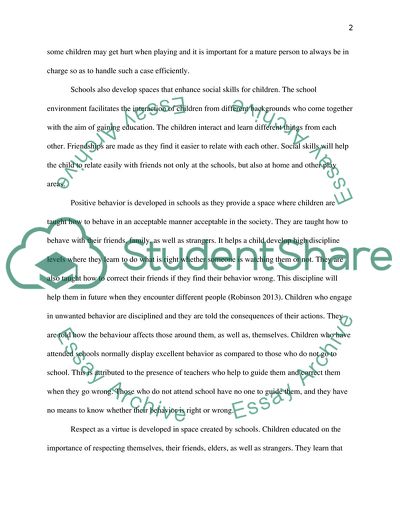Cite this document
(“Modern Childhood and Institutions Essay Example | Topics and Well Written Essays - 2000 words - 1”, n.d.)
Modern Childhood and Institutions Essay Example | Topics and Well Written Essays - 2000 words - 1. Retrieved from https://studentshare.org/education/1692053-what-contribution-does-spatiality-make-to-the-construction-of-modern-childhood-and-its-institutions-and-in-what-ways-might-understanding-this-support-social-constructionism-aim-to-rethink-childhood-lives
Modern Childhood and Institutions Essay Example | Topics and Well Written Essays - 2000 words - 1. Retrieved from https://studentshare.org/education/1692053-what-contribution-does-spatiality-make-to-the-construction-of-modern-childhood-and-its-institutions-and-in-what-ways-might-understanding-this-support-social-constructionism-aim-to-rethink-childhood-lives
(Modern Childhood and Institutions Essay Example | Topics and Well Written Essays - 2000 Words - 1)
Modern Childhood and Institutions Essay Example | Topics and Well Written Essays - 2000 Words - 1. https://studentshare.org/education/1692053-what-contribution-does-spatiality-make-to-the-construction-of-modern-childhood-and-its-institutions-and-in-what-ways-might-understanding-this-support-social-constructionism-aim-to-rethink-childhood-lives.
Modern Childhood and Institutions Essay Example | Topics and Well Written Essays - 2000 Words - 1. https://studentshare.org/education/1692053-what-contribution-does-spatiality-make-to-the-construction-of-modern-childhood-and-its-institutions-and-in-what-ways-might-understanding-this-support-social-constructionism-aim-to-rethink-childhood-lives.
“Modern Childhood and Institutions Essay Example | Topics and Well Written Essays - 2000 Words - 1”, n.d. https://studentshare.org/education/1692053-what-contribution-does-spatiality-make-to-the-construction-of-modern-childhood-and-its-institutions-and-in-what-ways-might-understanding-this-support-social-constructionism-aim-to-rethink-childhood-lives.


